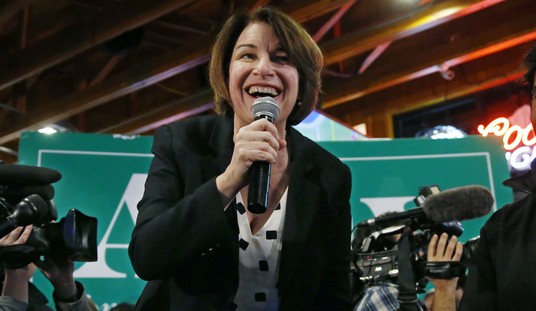
Photo by 401kcalculator.org
From The Wall Street Journal:
Talk of Retirement-Savings Cap Rattles Financial Industry
GOP lawmakers are looking for ways to generate revenue to support broad reductions in individual tax rates
By Anne Tergesen and Richard Rubin | October 20, 2017 | 7:00 a.m. ET
Proposals floating around Washington to cap the amount that Americans can contribute before taxes to 401(k) plans and individual retirement accounts are unsettling professionals in the retirement industry.
Republicans are looking for ways to generate revenue to support broad reductions in individual tax rates. One idea is to limit the amount of pretax money households can sock away for retirement saving. Such a move would likely generate significant political blowback but it hasn’t been explicitly ruled out, stirring worry among industry lobbyists.
Members of the House Ways and Means Committee are widely expected to release a version of the tax bill by mid-November. Specifics on a wide range of issues remain unclear. Emily Schillinger, a spokeswoman for the Ways and Means Committee, declined to comment.
Lobbyists and others in the retirement and financial services industries who have spoken to congressional staff and committee members say lawmakers are looking at proposals that would allow 401(k) participants to contribute significantly less than what is currently allowed in a traditional tax-deferred 401(k). An often mentioned amount is $2,400 a year. It isn’t clear whether that would only apply to 401(k)s or IRAs or both.
Currently, employees under age 50 can save up to $18,000 a year in a 401(k), while those 50 or older can set aside up to $24,000. In an IRA, the annual contribution limits are capped at $5,500 and $6,500 for the same age groupings. The 401(k) limits are scheduled to rise to $18,500 and $24,500 in 2018.
There’s more at the original.
Given that money contributed to a 401(k), 403(b) or IRA plan is eventually taxed, it’s not as though people are somehow ‘getting away’ with avoiding taxes. The underlying theory is that people will wait until retirement to withdraw money from such plans,¹ and, no longer earning a paycheck, will be in a lower tax bracket when the money is withdrawn. Thus, for the Feds, people withdrawing money from tax-deferred accounts won’t be paying as much tax on their retirement savings as they would have were the money taxed when earned.
This proposal will impact the working class: if your 401(k) contribution rate is 6%² would be contributing $3,120 per year into his 401(k) plan, matched with $1,560 by his employer. A proposal to limit such to $2,400 per year would mean that either the employee would have to limit his contribution to $2,400 per year, (4.6%) meaning only $1,200 additional by the employer, effectively a pay cut, or that a second, Roth-style 401(k) plan³ would have to be set up for contributions over $2,400.
The current maximum deferred plan rates, $18,000 and $24,000, are very much middle class issues. You’d have to earn $90,000 and defer 20% of your income into a 401(k) plan for someone under 50 to hit the limit.4
An obvious question: why would Republican congressmen want to cause troubles for the very voters who put them in office? The people such a change would affect are the people at the lower and middle ends of the economic spectrum, wreaking havoc among settled retirement savings plans, forcing changes upon them. More, some small businesses would have to put time and money into expanding their 401(k) retirement plans to include Roth options if they don’t already have them. There are more than a few employees in 401(k) plans who are not prepared for any greater complexity in how those plans work and are run.
In theory, helping to finance lower tax rates by reducing the maximum 401(k) deferral rate could be a net wash for some people, but when we are talking about the working class, people already at the lowest tax bracket, that washout wouldn’t occur. We should always encourage people to save for retirement, to avoid poverty during retirement years; all that this ‘plan’ can do is to trade more immediate revenues for greater elder poverty in the outyears.
Defined benefit retirement plans are falling by the wayside, as many who worked in the steel industry discovered when their former employers went out of business, and the pension plans employees thought would be there when they retired were gone. Defined contribution plans are what is happening now, and the last thing that the Congress should do is try to hold back what employees can save.
_______________________
Cross-posted on The First Street Journal.
_______________________
¹ – There is a 10% federal tax penalty for withdrawing funds before age 59½.
² – The most common participation rate is 6% by the employee, matched 50¢ on the dollar by the employer, an employee earning $25.00 an hour, or $52,000 a year. Standard assumptions: 40 hours per week, without overtime, over 52 weeks per year.
³ – [3. Under Roth plans, the money contributed is taxed before contribution, but is then tax-free upon withdrawal. Once you have been in a Roth plan for five years, the gain on investment is non-taxable as well. I always urge people who ask me to put their money in a Roth plan, because the value of untaxed gains can be enormous.]
4 – In 2016, Vanguard reported an average contribution rate of 6.2%, while Fidelity reported 8.4%.














Join the conversation as a VIP Member